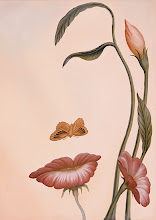Moai, or mo‘ai (pronounced /ˈmoʊ.аɪ/), are monolithic human figures carved from rock on the Polynesian island of Easter Island, Chile between the years 1250 and 1500.[citation needed] Nearly half are still at Rano Raraku, the main moai quarry, but hundreds were transported from there and set on stone platforms called ahu around the island's perimeter. Almost all moai have overly large heads three-fifths the size of their bodies. The moai are chiefly the living faces (aringa ora) of deified ancestors (aringa ora ata tepuna). The statues still gazed inland across their clan lands when Europeans first visited the island, but most would be cast down during later conflicts between clans.
The statues' production and transportation is considered a remarkable intellectual, creative, and physical feat.The tallest moai erected, called Paro, was almost 10 metres (33 ft) high and weighed 75 tonnes; the heaviest erected was a shorter but squatter moai at Ahu Tongariki, weighing 86 tons; and one unfinished sculpture, if completed, would have been approximately 21 metres (69 ft) tall with a weight of about 270 tons
Monday, April 12, 2010
Subscribe to:
Post Comments (Atom)


No comments:
Post a Comment